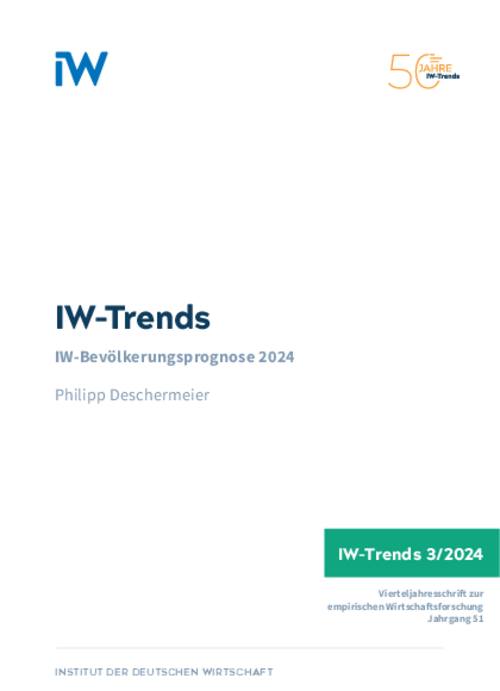The demographic transition poses major challenges for policymakers, business and society as a whole. Policymakers seeking solutions to these challenges mainly base their decisions on the quantitative data of population forecasts.

IW Population Forecast 2024: Essential Data for Meeting the Challenges of Demographic Change on the basis of the 2022 census

The demographic transition poses major challenges for policymakers, business and society as a whole. Policymakers seeking solutions to these challenges mainly base their decisions on the quantitative data of population forecasts.
The German Economic Institute’s population forecast, the IW-Bevölkerungsprognose, calculates demographic developments at both the national and state levels up to 2040. It suggests that by this date Germany's population will have grown by 2.3 per cent to around 85 million. Despite this increase, the German economy will face enormous challenges, as the potential labour force will by 2040 have shrunk by some 6 per cent to around 52,2 million people. In the meantime, German society will have aged, with the number of senior citizens expected to rise by 36.7 per cent to around 21.5 million by 2040. However, these developments will not be evenly distributed across Germany’s 16 states. While by the end of the forecast period the city states of Berlin and Hamburg will have grown into metropolises of 4 and 2 million inhabitants respectively, the less densely-populated states in eastern Germany will experience a particularly significant decline in population. As the baby boomer generation reaches retirement age, the potential labour force in all states will shrink.

IW Population Forecast 2024: Essential Data for Meeting the Challenges of Demographic Change on the basis of the 2022 census

More on the topic

Possible Developments in the Supply of Skilled Workers up to the Year 2040
The German labor market is on the verge of a fundamental upheaval. While the number of people in the labor force has risen steadily in recent decades, it is likely to drop significantly as soon as the baby boomers retire.
IW
The Social Situation of Young People from Non-German-Speaking Families
An analysis of the microcensus shows that in 2017, around 2.4 million children and adolescents in Germany lived in non-German-speaking households. This corresponds to 17.7 per cent of all minors (under the age of eighteen) and 47.0 per cent of those with a ...
IW